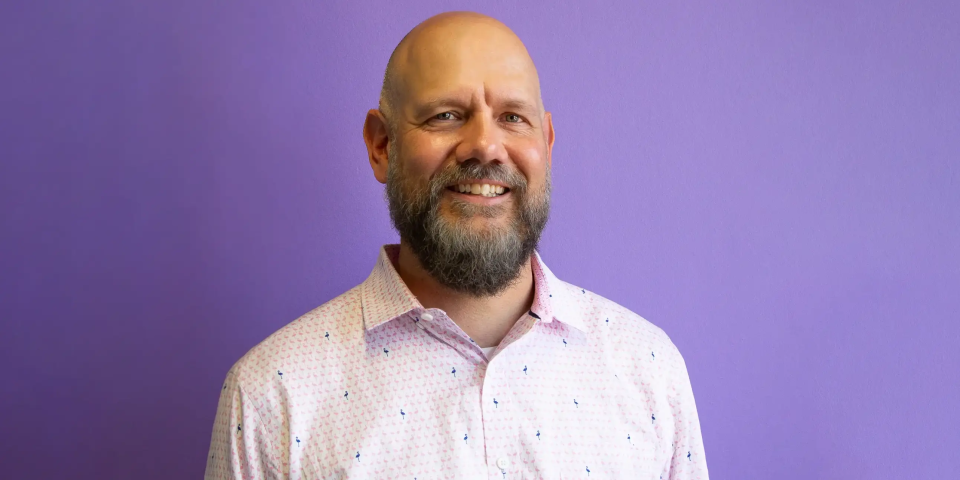Spotlight – Richard Strange on harnessing technology for student success
Defining purpose
‘Our purpose is about the student: it’s at the heart of what we do,’ says Strange. As a values-driven senior leader, he sees technology primarily as a tool for enhancing the student experience. ‘How do they consume services? How do they get the right support?’ he asks. For Strange, technological solutions must always be centred around making students’ lives easier.
Next, technology must serve an institution’s strategic ambitions. As the sector evolves, it’s crucial to drive business agility so a university can ‘adapt and move in a market that’s changing rapidly’. Further, technology cannot be a barrier to an institution’s aspirations. At Southampton ‘our ambition is growth,’ says Strange, ‘and technology has to be an enabler’.
Yet, in challenging times, ‘the lens inevitably turns to business efficiency’. For CDIOs like Strange, that means maximising value from new technology investments but also ensuring that existing products are ‘sweated’ – exploited to the full extent of their capabilities. ‘Institutions pay a lot of money for technology stacks,’ he says, ‘but don’t always get full value from them’.
Simplifying complexity
One of the biggest challenges is that ‘the sector likes to take third-party solutions and customise them beyond recognition,’ says Strange. This ‘burden of complexity’ can make moving a technology stack through an upgrade path more difficult, which introduces risk into an organisation. ‘We have to reduce that complexity, consolidate, and take risk out,’ he says.
Achieving this means reframing your perspective: rather than technology for technology’s sake, ‘the reality is that technology is there to drive a business process,’ says Strange. That means leaders must ask themselves and others in their organisation some key questions: ‘What are the processes we’re trying to deliver? Why? What makes our institution different?’
Yet Strange recognises there is a degree of complexity built into the higher education sector by default because the ‘product’ it offers is far more nuanced than those of other industries. For him, this means ‘plug and play’ is by far the most effective strategy when implementing new technology. ‘You can adopt at speed,’ he says, ‘and you improve interoperability’.
As a result, this improves time to value – unlike large-scale implementations where the value may not be apparent for several years. ‘Those days are gone,’ he says. ‘Now it’s about incremental value delivery as you move through any type of implementation.’
For Strange, it’s also crucial to have an integration stack that’s adaptable enough to be reused for multiple purposes. ‘You create it once,’ he says, ‘but exploit the value from it time and time again’.
Centralising data
Underpinning all of this is data. For Strange, data is essential – not only for higher education institutions, but for any thriving business – to drive decision-making.
He shares an analogy, drawn from a colleague at the University of West of England where Strange was CDIO for five years. ‘It’s like flying an aeroplane,’ he says, ‘a pilot is reliant on their dials, which are essentially data sets’. For senior leaders, running an organisation works in a similar way. ‘You need your cockpit data to know where you are heading and how to mitigate any risks,’ he says. As a pilot wouldn’t fly a plane without their instruments, why would the leader of an organisation fly blind without data to guide them?
Strange has considerable experience in the manufacturing and engineering sectors. Here, he says, ‘core business processes take place in one environment’ and so the data unpinning these tends to be centralised.
However, universities are diverse organisations with data typically spread across the entire institution. So ‘a data integration system is absolutely pivotal to harness the power of those data sets’. Again, plug and play capability is vital – enabling an institution to extract insights from the master data as needed for specific use cases.
This has two clear benefits, he says. First, data helps with operational efficiency and strategic planning. Second, data allows a richer understanding of student engagement with information drawn from multiple touchpoints. The latter can provide high-level insights on retention, progression and withdrawal but, crucially, it can support the individual student experience by flagging potential issues and aiding early intervention with tailored support mechanisms.
Working with partners
So how best to achieve these aims? For Strange, ‘external vendors are a crucial component and extension of your own IT delivery organisation’. However, he cautions that selecting the right vendors and the right technologies for your institution is ‘clearly critical’.
Making these choices is not always straightforward, he says, because there are different levels of maturity in products and suppliers within the market. Therefore, ‘the key with external vendors is always to be crystal clear on what you’re trying to achieve’.
He admits the nature of procurement regulations ‘can sometimes make institution/vendor relationships more transactional’. So with technology partners at his own institution, Strange is working to build mature, evolving relationships. ‘It’s important as a vendor that you fully understand our organisation, our goals and our challenges,’ he stresses.
Streamlining learner experiences
As a final point, Strange returns to the student experience when summing up his approach to technology. ‘I think students can be exposed to an institution’s internal complexities through the services they consume,’ he says. That means services can be ‘time consuming to traverse with multiple entry points and varying experiences. So ‘how can we take that burden away?’






